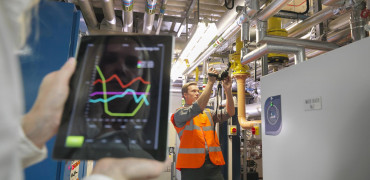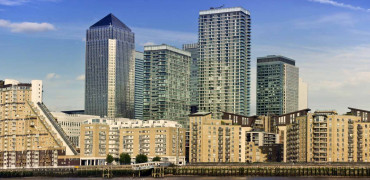The government will introduce an interim Part L of the Building Regulations in 2022 that could require a cut of 27% in emissions against current Part L levels.
It’s a significant target and one that gives a strong signal about where the fully updated Part L (due in 2025) could be fixed.
But today’s designers and building operators have to concern themselves with more than as-designed emissions levels.
There is increasing focus on the embodied carbon of buildings as well as operational energy use (and related emissions).
Whole life carbon disclosure for buildings, sometimes referred to as embodied carbon was raised in the Climate Change Committee’s (CCC) June 2020 report, Reducing UK emissions: Progress report to Parliament.
Its recommendation was to: “support the assessment and benchmarking of whole-life carbon in buildings”. This was alongside a further recommendation to rapidly scale up the levels of wood used in construction.
Building services professionals have unique insights into delivering energy efficient solutions
Minimum standards
We are also seeing Minimum Energy Efficiency Standards (MEES) tightening, with buildings that achieve low EPCs in danger of becoming stranded assets that cannot be leased. Government currently favours the shift to a minimum EPC of C (up from the current requirement of E).
Leaving aside the legal requirements for buildings, corporate occupants are also become far pickier about the environmental credentials of the buildings they occupy.
Large organisations making public commitments to their own Net Zero targets want their office space to reflect their sustainable credentials.
Building services will take a leading role in future-proofing buildings from the effects of legislation and client requirements.
HVAC is vital for occupant comfort, but uses around 40% of energy in the average office building.
What’s more, services such as gas fired heating and hot water provision are under increasing scrutiny for their use of fossil fuels.
Embodied carbon
From an HVAC equipment point of view, embodied carbon is a factor that manufacturers such as Mitsubishi Electric are already calculating.
This is a relatively new development for the UK, and to help with its introduction CIBSE has published TM 65: Embodied carbon in building services: A calculation methodology.
TM65 provides guidance on how to use Environmental Product Declarations (EPDs) for building services products, and how to estimate the embodied carbon of products when an EPD is not available. It also provides useful data capture and reporting forms.
Although the data gathering is largely in the hands of manufacturers, the CCC points out that designers and buildings are likely to carry a level of responsibility for demonstrating compliance with embodied carbon compliance requirements.
Future energy costs
Taking the long view of carbon emissions from buildings also includes consideration of the future costs of energy sources such as gas, which may rise as government drives the switch to low-carbon electricity.
The CCC is pointing the way to increased use of electric heating through heat pump technology, along with heat networks where viable.
Re-applying heat from buildings is another approach to cutting emissions and saving on energy costs.
Heat pump technology gives designers the option to take heat energy from the cooling system and upgrade it for use elsewhere in the building – or even in other buildings.
This could mean using heat that is a by-product from cooling systems to meet domestic hot water requirements in an office.
Or it could be using heat ejected from office cooling to heat water for nearby homes in a mixed-use development.
Other uses of heat
Heat can also be re-used in mechanical ventilation and heat recovery systems (MVHR). It offers a balance of good indoor air quality with energy efficiency, which is a constant challenge for today’s engineers.
Building services professionals have unique insights into delivering energy efficient solutions.
The next decade should provide plenty of opportunity for them to share their knowledge for the greater good.
Selection of the ‘right’ system is no longer a case of delivering heating, hot water and air conditioning.
It’s about ensuring building owners won’t have to replace those systems five years down the line because they no longer meet the standards required by legislation or occupants.
James Harwood is a Business Development Manager




